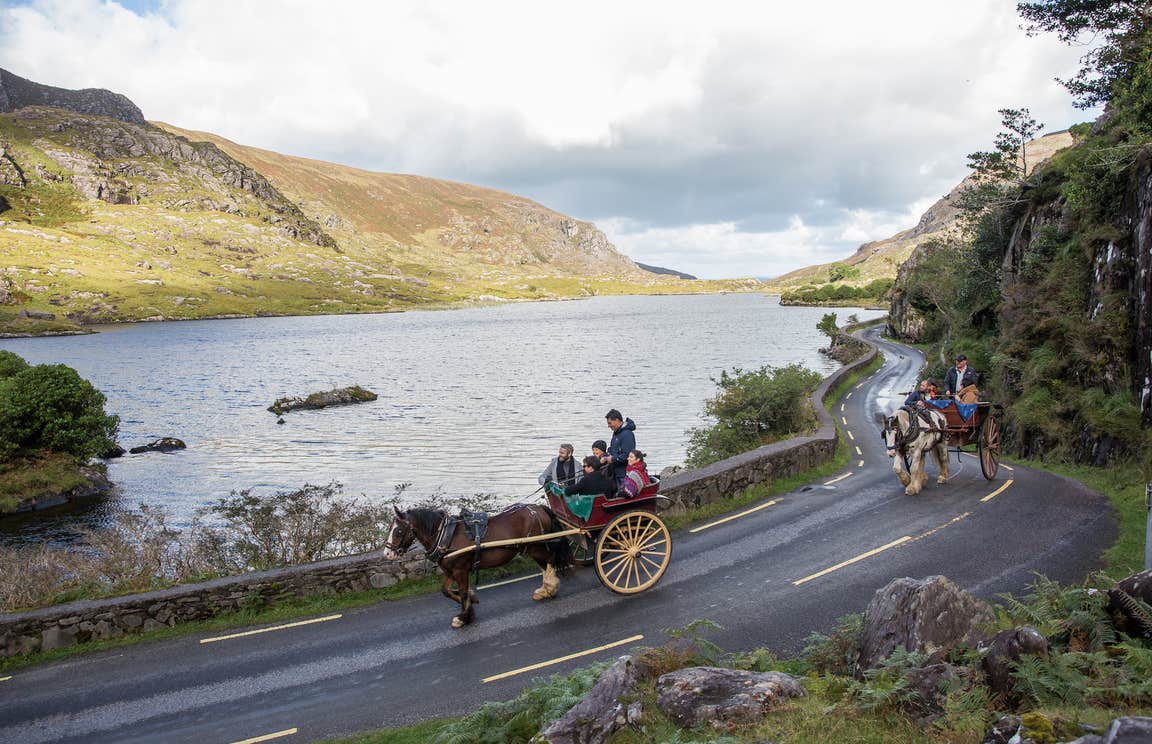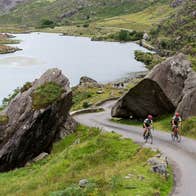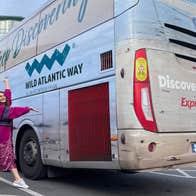Photo credit: @tadhg_obrien
The best ways to get around
Getting around Killarney is a cinch. To get the most of the park’s big-ticket attractions, the best way to get around is by bike: there are plenty of places to rent one, including Killarney Rent a Bike on Beech Road, opposite the tourist office.
Or you could go for a more traditional alternative: the Tangney family have been operating Killarney Jaunting Cars for five generations, so it’s no surprise that this horse-and-buggy service is virtually synonymous with the town. Most depart from along Kenmare Place and you have a bunch of options, including fully guided tours and fixed itineraries.
Between March and November a Big Red Bus operates a hop-on, hop-off service between Mission Rd (just west of the Killarney Plaza Hotel) and the park’s main attractions.
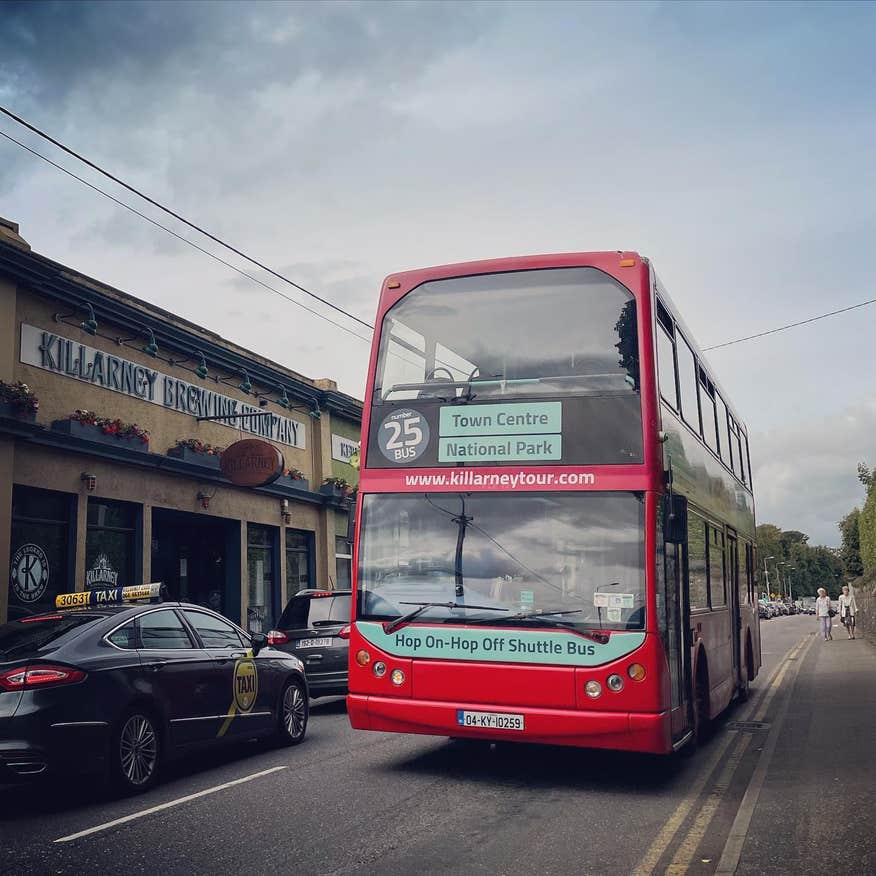
Photo credit: @killarney_executive_tour_co
Exploring the National Park
Killarney National Park was established in 1932 after Arthur Bourn Vincent gifted the bulk of his family’s estate to the Irish nation. Its nearly 30,000 acres are divided between woodland, mountain and lakes and include some of Ireland’s most iconic vistas.

A great place to start your exploration is at Killarney House & Gardens, an 18th century stable block that was once part of a much bigger estate but is now the park’s visitor centre. The free guided tours of the house are fascinating, as are the summer tours of the beautifully landscaped gardens, which include the longest herbaceous border in Ireland. The house is just south of Main Street.
To get into the heart of the park, you’ll have to cycle (or walk, or sit in a jaunting car) 6km south of town along Muckross Road. Once you’ve crossed Flesk Bridge, cross the road and take the cycle path that brings you straight into the park; bear in mind that pedestrians and jaunting cars also use the path.
The centrepiece of the Muckross estate is the elegant Victorian-era mansion, Muckross House. It was built in 1843 as a hunting lodge for Henry Arthur Herbert and his wife, water-colourist Mary Balfour Herbert; inside, the walls are lined with trophy stag heads and huge stuffed trout, in between family portraits by John Singer Sargent. Unlike a lot of heritage homes, nearly two-thirds of the furnishings here are original, including the tapestries, Persian rugs, silverware and porcelain pieces specially commissioned for Queen Victoria’s visit in 1861. The only way to visit the house is by guided tour, which lasts an hour and runs throughout the day.

Queen Victoria’s visit was a huge deal for the Herberts and the local community; the walled gardens were developed throughout the 1850s in anticipation of her visit, but they’ve been added to over the decades and are one of the loveliest examples of 19th century formal garden planning in the country – check out the azaleas and rhododendrons as well as the lovely rock garden.
Just behind the main house you’ll find a couple of craft workshops, including Muckross Pottery, where master potter Margaret Whelan showcases her range of tableware and pots; and Mucros Weavers, with creations by John Cahill.
If you’ve come in the morning chances are it’s close to lunchtime, and the craft courtyard is where you’ll also find the Garden Restaurant, which serves everything from sandwiches and homemade cakes to more substantial dishes, including a particularly tasty fresh cod and trout dish served on a bed of vegetables.
Go back in time
On the other side of the main car park of Muckcross House is the entrance to Muckross Traditional Farms, where the rural life of 1930s Ireland has been carefully recreated for maximum authenticity. A combined ticket gives you discounted access to both the house and the farms; otherwise you can visit the farms on a separate ticket without visiting the house.
It’s an impressive setup – the three separate farms are spread out over 70 acres and each of the farmhouses are decorated as they would have been at the time, with traditional furniture, dressers and solid (if smallish) beds. The centrepiece of each home is the kitchen, which was heated by an open fire.
The farms are a living museum, and on your visit you’ll get to meet costumed guides who bring the place to life, including exhibitions on how to use traditional ploughs and other farm machinery. There’s also a petting area where kids get a chance to see piglets, lambs and ducks up close.
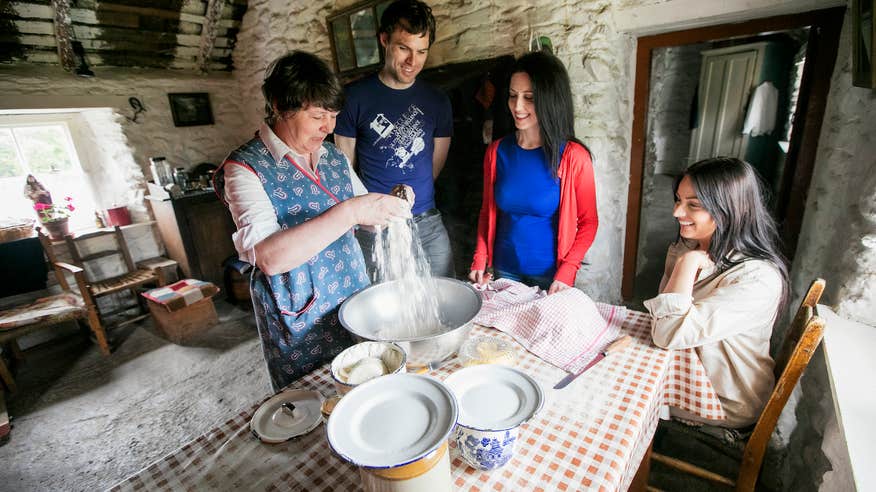
The farms are one of the national park’s major family highlights, and you’ll want to allow around two hours to do the whole experience justice. There’s a convenient shuttle bus that loops around the three farms throughout the day (except for an hour at lunch).
Do go chasing waterfalls
If you’ve still got some energy after the farms, around 2.5km south of Muckross House is Torc Waterfall, a 20m cascade that is one of the most popular spots in the park. The waterfalls are a 10-minute walk off the 15km-long Muckross Lake Loop, which goes right around Muckross Lake. Lock your bike up by the public toilets and walk the steps up to the viewpoint.

There’s more great scenery further on the loop, especially between the Meeting of the Waters – where three of Killarney’s lakes meet – and the 400-year-old stone Bricín Bridge, which crosses the narrow neck of water connecting Muckross Lake with Lough Leane. (Exploring the park by taking a boat on the lakes is as popular as doing it on land.)
But if you don’t fancy doing the bigger loop, there’s a shorter 9km one that turns back toward Muckross House.
A night in Killarney
In a town full of restaurants serving fine food, some of the best is served at the Celtic Whiskey Bar & Larder. It might be best known for its whiskey experience (and the 1,000 or so whiskies from all over the world it serves in the bar), but this is also a superb gastropub whose menu serves up a range of appetising dishes, from locally sourced lamb rump to a tasty slider board that includes burgers, buttermilk chicken with sriracha mayo and a lentil burger with guacamole.
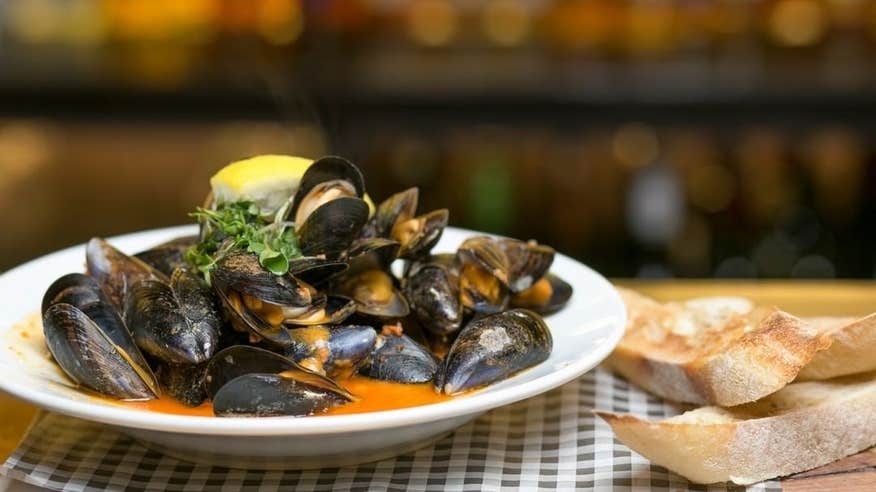
Photo credit: @celtwhiskeybar
For something a little more formal, the elegant and candlelit Murphy Brownes on High Street is as good with its meat dishes (the steaks are all sourced from Cronins butchers next door) as it is with fish (the pan-fried sea bass is excellent, as is the classic fish ‘n' chips) and vegetarian dishes (the vegan burger comes with curried mayo, rainbow coleslaw and sweet potato fries).
And no night in Killarney is complete without stepping into at least one of its many brilliant pubs. One of the town’s best loved drinking spots is O’Connor’s on High Street, a fourth-generation traditional pub that has live music almost every night.
Trade the car for other modes of transport and explore more beautiful locations around the country car-free.
